Most animals covered in this series have at least one or two traits that appear human-like, either in appearance or in behaviour, for example most eyes are circular, many animals also have hands and feet or at the very least legs, then there are anthropomorphological observations such as the sadness observed in an animals’ eyes.
The Jellyfish on the other hand does not possess a single trait that resembles any part of our anatomy or behaviour, though some people do just drift along in life, so I guess you could say there are behavioural similarities!
They appear Alien, mysterious in a sense of trying to pinpoint how their evolutionary timeline resulted in the animals we see today, their simplistic design and nomadic lifestyle serves very little purpose other than to feed or breed, but by delving in to their anatomy we can actually see there is a high degree of complexity in their simplicity.
The Lions-mane Jellyfish seems like the perfect animal to cover as an introduction to the fascinating phylum of Cnidaria.
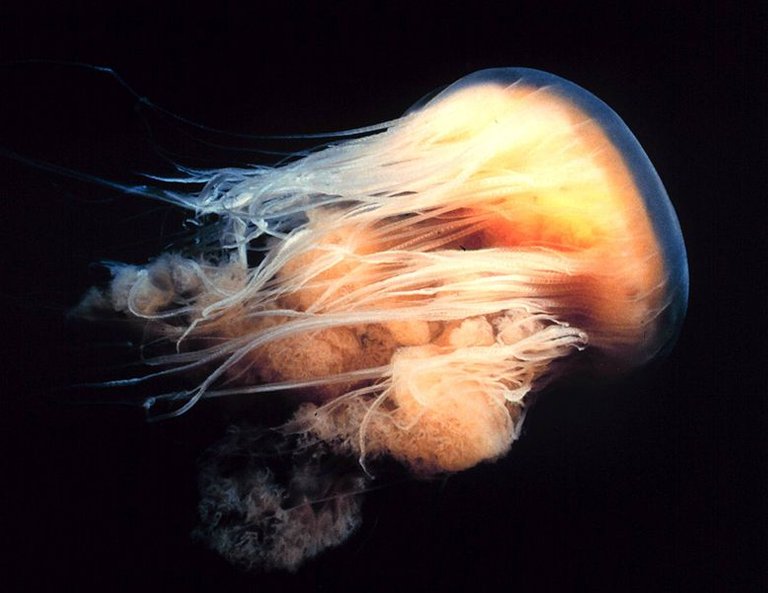
Image credit: Wikimedia Commons
Description and Distribution
The Lions-mane Jellyfish (Cyanea capillata) is the largest species of Jellyfish currently known to science, their size seems to be determined by the temperature of the water as the average Lions-mane varies dramatically in size throughout its range.
In the colder northern waters, they can achieve a bell diameter exceeding 2 metres meaning the average Human could lay comfortably across the top of them, the further south they are the smaller they become, with the smallest mature individuals reaching a bell diameter of just 0.5 metres.
This difference in size also commonly leads to a difference in colouration, the larger northern specimens are frequently a deep red or purple colour, whereas those observed in lower latitudes are frequently a light orange or tan colour, this difference may be a result of a variation in diet though this has yet to be tested and remains just a theory.
From the limited studies that have been conducted there is no indication that spawning between larger and smaller or different coloured individuals has any effect on the viability of the offspring produced, as such it is unlikely that the Lions-mane Jellyfish well ever be separated in to several sub-species based on geographic range and appearance.
Their name derives from the appearance of their trailing tentacles which form a thick mesh of strands resembling that of a Lions-mane, it is often dark in appearance as the tentacles are tightly packed to a point that they lose the translucent effect that is noticeable on the bell.
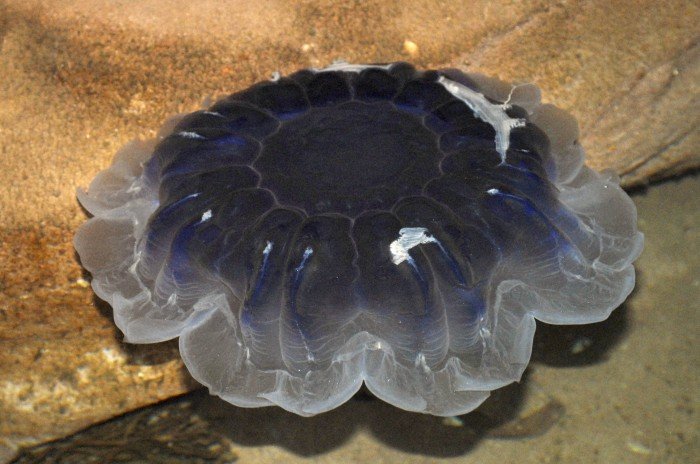
Image credit:Wikimedia Commons There is a debate as to whether the Blue Jellyfish found throughout the southern hemisphere is the same species
If you thought that their bell diameter was large, the sheer size of their tentacles dwarves it in comparison, larger than average individuals can possess tentacles that stretch for over 30 metres, the largest Lions-mane Jellyfish ever observed had tentacles that were 37 metres (120 foot for our imperial friends) long, making it comfortably longer than the largest animal that’s ever existed, the Blue Whale.
The Lions-mane Jellyfish is a cold-water species and cannot be found at temperate latitudes, they are present throughout the north-Atlantic and north-Pacific and are also frequent in the English Channel, North Sea and the Arctic ocean.
It’s debatable whether a similar species found in the waters surrounding Australia, New Zealand and Argentina could in fact be the same species, currently they are separated at the species level under the genus Cyanea, though some Zoologists believe them to be the same species that should instead be denoted as varying subspecies.
The Brain of the Jellyfish
The general anatomy of the Lions-mane Jellyfish does not differ to much from the simple anatomy of other Jellyfish species, as in they possess tentacles, arms, a bell, a mouth, Gonads, a digestive system, and sensory nodes, they do not possess a brain.
It’s difficult to imagine life without a brain, well you wouldn’t be able to imagine for a start, though the Jellyfish proves that it is not a requirement for multi-cellular life, they are perfectly adapted to live their life autonomously.
Whilst the Jellyfish does not possess a brain, they do possess a “nerve-net” located in the Epidermis which connects to nerve endings at the base of their tentacles, this effectively functions as a primitive central nervous system, but if they aren’t connected to a central brain, what processes the information they gather, and can they react to stimuli?

Image credit: Wikimedia Commons Anatomical diagram of a typical Jellyfish, the Lions-mane does not possess some of the features in the diagram such as the Velum
To answer the first question, nothing, the nerve endings are able to detect changes in salinity (density of seawater), temperature and are also able to detect touch, such information triggers an involuntary reflex response, comparatively they respond in the same manner as a basic if statement.
As an example, if the nerve endings detect no touch they will supply a false statement which will prevent their stinging cells from engaging, if they detect touch they will supply a true statement and the stinging cells will fire instantaneously, a relatable response in Humans would be a standard reflex test, both responses are involuntary.
The entire processing capabilities of the Jellyfish are present in their nerve endings which are connected to various anatomical features, so to answer the second part of the question, yes, they can respond to stimuli, but only via an involuntary response, furthermore they will not nurse damaged areas / wounds and though they cannot feel pain they will exhibit different behaviors when confronted by a predator.
The Stinging Trail
The trailing section behind the bell consists of tentacles and oral arms which are used to move food towards the mouth to be digested, the oral arms are considerably thicker and do not contain any stinging cells which are known as Cnidocytes, Cnidocytes are confined to the tentacles and act as the Jellyfishes main form of defence and offence.
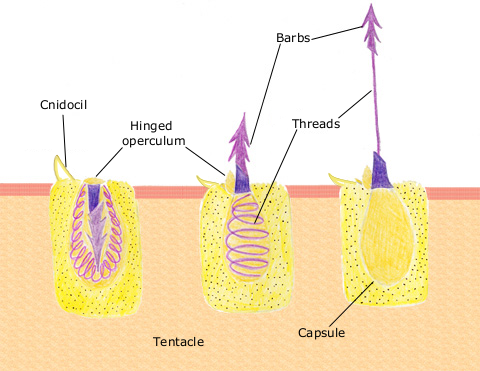
Image credit: Wikimedia Commons
The Cnidocyte cells are essentially ball like structures with a wound-up hypodermic needle within them known as a nematocyst, instead of being rigid like your typical hypodermic needle it is instead malleable and does not straighten until fired.
When the Jellyfish comes in to contact with an object the Nematocyst is triggered, and it straightens out with the aim of injecting into whatever it touched, once injected the Nematocyst then expends a toxic venom shortly after ejection that normally functions as a Neurotoxin.
In the case of the Box Jellyfish its toxin penetrates red blood cells and can induce Heart failure in as few as five minutes in a fully grown adult Human, the Lions-mane has a far less potent toxin and is rarely fatal in Humans though can cause significant discomfort, it’s advisable to avoid touching any Jellyfish as they all possess Cnidocyte cells.
The oral arms are often shorter than the tentacles and congregate towards the centre of the animal, there are two different types of tentacle present, the thicker central tentacles, and the thinner hair-like tentacle that are attached to the outer perimeter of the bell, these tentacles also contain stinging cells and are often longer than both the central tentacles and the oral arms.
The Bell
The bell of the Lions-mane is often translucent and contains most of the body cavity which comprises of the mouth, digestive system, gonads and stomach, it is split in to eight lobes known as Lappets, each Lappet is split in to four rows and has between 70-160 tentacles attached to it depending on the size of the individual.
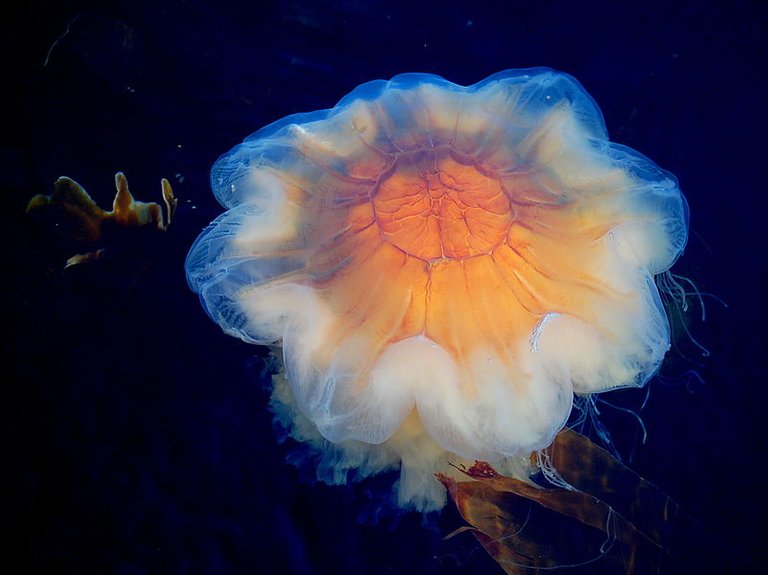
Image credit: Wikipedia Commons The eight lobes are easily observed
The lobes are also adorned with a couple of features that play a highly important role, firstly they have a balance organ located between each of the boundaries of the lobes known as a Rhopalium, these organs help the jellyfish to orient itself in the water.
Another feature attached to the lobe is a primitive light receptor, Jellyfish do not have eyes, though with these receptors they are able to distinguish variations in light, in conjunction with the Rhopalium this likely aids in the Jellyfishes ability to remain oriented.
I mentioned previously that they have a mouth, as is the case with any animal that possesses a mouth, what goes in must in turn come out, therefore their mouth also functions as their anus, luckily the Jellyfish does not have taste receptors within their mouth or digestive tract.
Their digestive system is very simple in its design and is housed entirely within a single cavity called the Coelenteron, the Coelenteron contains the mouth/anus, digestive tract, stomach pouch and the intestines, the Coelenteron is also known as the gastrovascular cavity and nutrients are absorbed through the lining of this cavity, this digestive system can also be known as a blind-gut, as food and waste enter/exit through the same orifice.
The bell itself is mostly hollow and it is this feature that enables the bell to act as the Jellyfishes primary source of movement, whilst they live a large planktonic life drifting along with the ocean currents they also possess basic propulsion.
They have specially adapted muscles on the underside of the bell called coronal muscles, these muscles expand and retract to alter the volume of water within the bell, as water is pushed out of the bell the Jellyfish is propelled in the opposite direction, control of the coronal muscles is once again an involuntary response and will engage when certain stimuli are present, such temperature drops with varying water depths.
All of the mentioned organs within the bell function without any central control or even blood supply (they have no heart either), 95% of their body is comprised of water which is the highest ratio in the animal kingdom, adult Humans are roughly 60% water, this may be a shock as it’s a commonly spread myth that we are 90% water.
Diet and Behaviour
Despite having no brain or eyes they are quite the adept hunters, they are carnivorous, and their diet consists of a variety of fish, moon jellies, plankton and many other species of Jellyfish.
They cannot actively hunt and are instead reliant on their prey straying to close to their tentacles, after contact is made the Nematocysts are fired and smaller animals will likely succumb to the toxin and become helplessly paralysed, the Jellyfish will then pull the prey towards its mouth to be digested in the Coelenteron.
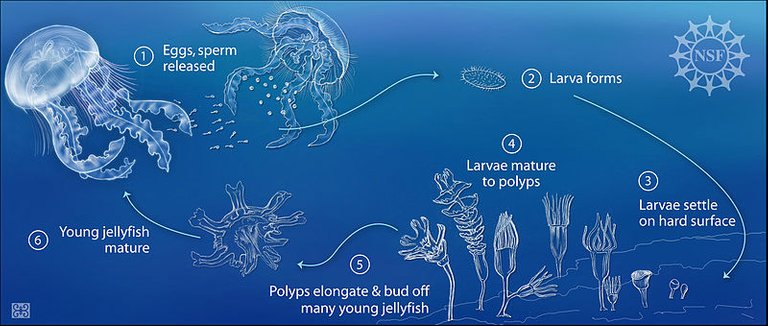
Image credit: Wikimedia commons Lifecycle of the Jellyfish
The lifespan of the free-swimming Jellyfish is approximately one year, though their entire lifespan can span multiple years and consists of four distinct phases which are:
The Larval stage: The Larval stage follows immediately after the mature Jellyfish have spawned, during this stage they are undergoing embryonic development as is typical in most animals, they then hatch and become free-swimming organisms known as planula.
The Planula are oval-shaped, and their outer perimeter is lined with tiny hairs known as Cilia which beat together to propel the Planula through the water, this stage only lasts for several days and the vast majority of Planula will be eaten by predators.
The Polyp stage: The Polyp stage is unique from the other three stages in that it is the only phase that doesn’t occur in the open water, instead the Polyps attach to the substrate of the seafloor.
The Polyp forms a cylindrical and stalk-like structure, the mouth opening of the polyp is located at the end of the body and is surrounded by small tentacles, as the Polyp develops further, several more structures will begin to grow from the central body, each Polyp is connected via a feeding tube system and they form what is known as a Polyp hydroid colony, this stage can last for several years.
The Ephyra stage: During this stage the stalks of the hydroid colony begin to develop horizontal grooves, gradually the grooves become deeper and deeper until the stalk resembles a stack of plates.
These plates develop from the top down, the uppermost plate disconnects from the Polyp structure and starts its life as a free-swimming miniature Jellyfish, though they more resemble a starfish, the bell is not fully formed yet and they do not possess the typical trail.
As the Ephyra disconnect from the Polyp stalk they are effectively the offspring of asexual reproduction, meaning that Jellyfish reproduce both sexually and asexually.
The Medusa stage: The Medusa stage of the Jellyfish is the final stage and is when the Lions-mane takes on its typically recognised appearance, this stage normally lasts for a single year and culminates with spawning.
During the Medusa phase they spend most of their time out in the open ocean where they inhabit depths no deeper than 20 metres, by inhabiting the pelagic zone they open themselves to an array of predators, most notably theOcean Sunfish and the Leatherback Sea Turtle, which in some regions may have a diet that consists primarily of the Lions-mane Jellyfish.
The only time that the Jellyfish begin to venture close to the shore is once they have reached a large size, at this point the oceans currents begin to play a major role in the animals’ movement, Lions-mane Jellyfish can be commonly observed during the late summer months and the Autumn, during this time many of them will die due to beaching.
Amazing Facts
In 2010 it was believed that a single Lion-mane Jellyfish was responsible for stinging between 50 and 100 people off of the coast of New Hampshire, the injuries were attributed to a specimen that was found dead, it weighed 40 kilograms and measured over 20 metres in length.
The heaviest ever Lions-mane Jellyfish weighed over 70 Kg’s, an incredibly impressive weight for an animal with such a basic anatomy.
Some species are struggling due to rising sea temperatures, though the Lions-mane appears to be currently experiencing a population boom.
Whilst they cannot think, and they do not interact, they often group up to form large groups of individuals that can number in the thousands and span for kilometres, groups of Jellyfish are called shoals.
Some fish, such as species of Trevally and Jack are immune or at least resistant to the Jellyfishes sting, they seek refuge in the vicinity of their tentacles and have even been spotted stealing food from the Jellies.
Along with the Bootlace worm they are the longest animals on the planet, which animal holds the record is still being debated as the measurements of the Bootlace worm, which is capable of stretching itself out, are not overly reliable.
Noting exactly when a species of Jellyfish evolved is quite difficult as they obviously do not leave behind any fossilized materials, though Jellyfish are thought to have emerged roughly 500-600 millions years ago, species of Jellyfish are amongst the oldest animals to exist on the planet.
Content Sources
More Amazing Animals
If you enjoyed this article you may enjoy some of the previous animals I have covered!
- The Flamboyant Cuttlefish
- The Kodiak Bear
- The Jumping Spiders
- The Ocean Sunfish
- The Leatherback Sea Turtle
- The Fruit Bats
- The African Elephant
- The African Lion
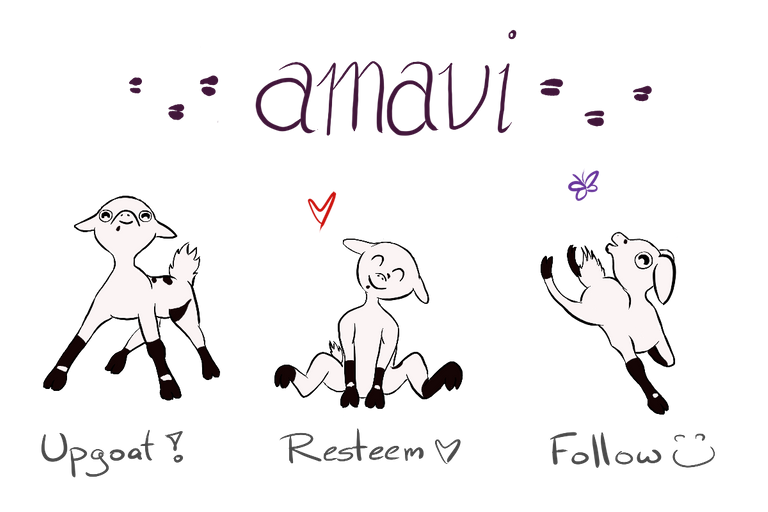
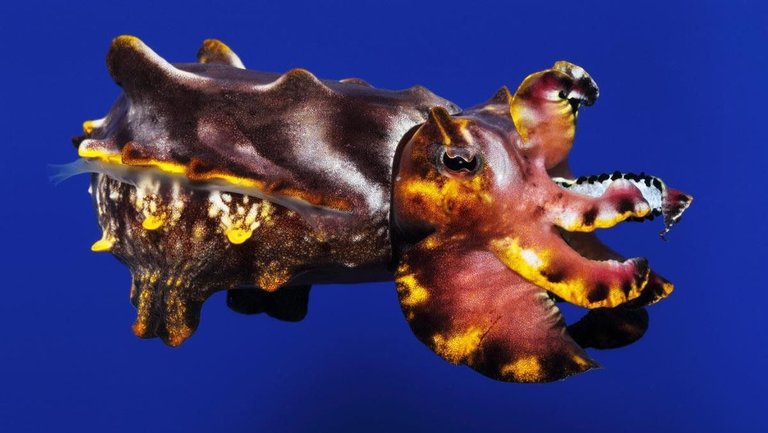
It is interesting to talk about behaviour when there is no brain involved 😅
I was fascinated to read how the animal’s ‘nerve-net’ prompts efficient enough responses to keep them going as a species (or, subspecies).
😂I found this so witty @amavi 😂:D
Lots of love to you
<3
=======================================================================================
This post was upvoted by Steemgridcoin with the aim of promoting discussions surrounding Gridcoin and science.
This service is free. You can learn more on how to help here.
Have a nice day. :)
Sea jellies are super cool! I actually recently did a couple posts on them- one on their current ecological role and one where they feature in a discussion about animal intelligence and its implications for alien life.
Hope to see lots more posts about sea jellies from you- there are so many awesome species of them out there.
They are very cool and unique animals!
There are a few species that i'd probably like to cover, though I think my next post in relation to Jellies will likely cover the entire phylum Cnidaria and the differences between the four different classes.
I'll have a read up on your posts. :)
Excited to read it! Actually, one of my major life goals right now is to eat some jellyfish- just have to find a place that serves it.
Entertaining, readable, and informative as always.
Funny that their mouth doubles as an anus!
It's interesting how we often use behavior to extrapolate to the presence of consciousness, but in this case we can't cos the substratum for consciousness is not there. But then does a proto-brain signify consciousness when the behavior isn't much more complex than a jelly's? Like I see roaches writhing in seeming pain when I spray them, and I feel kinda bad, cos it looks like they're feeling subjective pain. But who the hell knows.
Resteemed to over 15800 followers and 100% upvoted. Thank you for using my service!
Send 0.200 Steem or 0.200 Steem Dollars and the URL in the memo to use the bot.
Read here how the bot from Berlin works.
We are happy to be part of the APPICS bounty program.
APPICS is a new social community based on Steem.
The presale was sold in 26 minutes. The ICO will start soon.
Read here more: https://steemit.com/steemit/@resteem.bot/what-is-appics
@resteem.bot
nice post
Ciao Amavi, I was curating your post and I noticed that you used images and videos that may be protected by copyright, do you think you could use images with a different attribution? I really liked your post by the way ;)
Interesting one @amavi
They may have poisoned hundreds of the humans and can be considered as a threat but still, they also have given us several enhancement in the field of biomedicines. You may have heard of Aequorea victoria a known jellyfish for the production of Green Fluorescent Protein (GFP).
Osamu Shimomura, Martin Chalfie and Roger Y. Tsien shared the Nobel prize in chemistry for the discovery and development of Green Fluorescent Protein by this you can just guess the importance of it.
And yeah, they are among the oldest of all creatures and still there is so much more to study.....
Cheer
HUGE ! One thing : I didn't know that anus and mouth is the same "gate" for jellyfishes... so magnificent and so weird ! Nature is such a wonder, thank you Amavi for this post !
Great post, @amavi! I definitely learned a few new things about the Lion's mane jellyfish from reading this. I remember really disliking these guys when I was younger, due to a few encounters where I got stung! I have never really seen one that is bigger than 20cm or something like that though.
Anyway, keep up the good work!
Best regards from @valth
No brain, but they have existed for a long time pretty successfully. Interesting read thanks for the article
Hi, I just followed you :-)
Follow back and we can help each other succeed!
Jellies without brains but continues to live on & survive. Quite fascinating,such amazing marine animals. Thanks for contributing an amazing write-up @amavi. It would be nicer to see you around the community engaging more by leaving comments to other steemstem users since you write so well. 😊
Haven't heard from you in a while... I hope you are doing well :)
Hi, @amavi. I just wanted to say that I have missed your posts lately, and I hope you are okay! I hope you find the time to make some new amazing animal posts soon :)
Best regards from @valth
Congratulations @amavi! You have completed some achievement on Steemit and have been rewarded with new badge(s) :
Click on any badge to view your own Board of Honor on SteemitBoard.
For more information about SteemitBoard, click here
If you no longer want to receive notifications, reply to this comment with the word
STOPCongratulations @amavi! You have completed some achievement on Steemit and have been rewarded with new badge(s) :
Click on the badge to view your Board of Honor.
If you no longer want to receive notifications, reply to this comment with the word
STOPDo not miss the last post from @steemitboard!
Participate in the SteemitBoard World Cup Contest!
Collect World Cup badges and win free SBD
Support the Gold Sponsors of the contest: @good-karma and @lukestokes
Congratulations @amavi! You have completed the following achievement on Steemit and have been rewarded with new badge(s) :
Click on the badge to view your Board of Honor.
If you no longer want to receive notifications, reply to this comment with the word
STOPHi @amavi,
I'm going through and cleaning up inactive people I follow, and in the process trying to contact a few who were particularly good posters and let them know that they were appreciated and I hope they come back. I can't find any outside contact info for you, so I'm hoping that you'll see this comment.
Best,
Tim
Thank you! I have had a very busy few months! I promise I’ll be back soon..... post is in the making
Great!
Congratulations @amavi! You have completed the following achievement on the Steem blockchain and have been rewarded with new badge(s) :
Click on the badge to view your Board of Honor.
If you no longer want to receive notifications, reply to this comment with the word
STOPCongratulations @amavi! You have received a personal award!
Click on the badge to view your Board of Honor.
Do not miss the last post from @steemitboard: